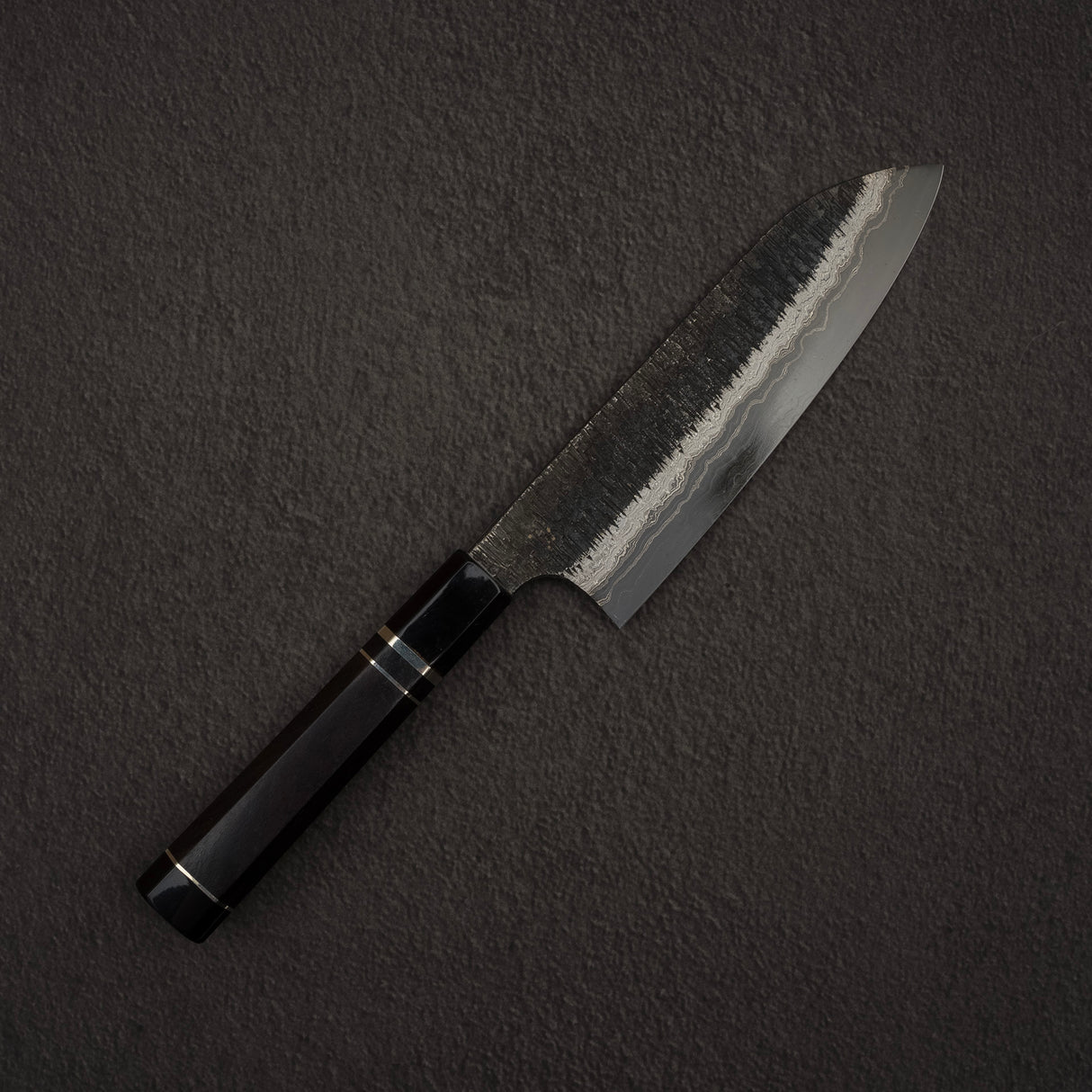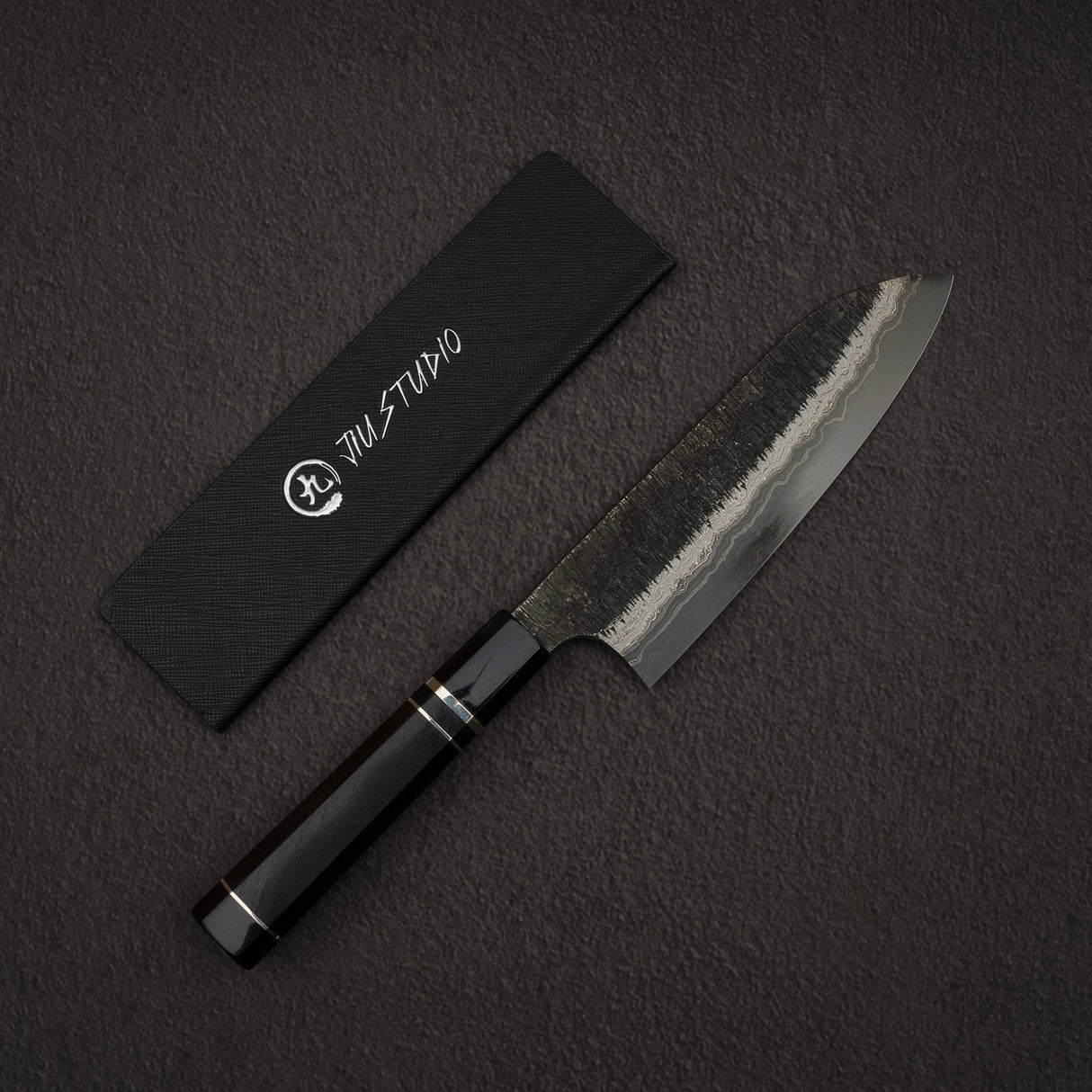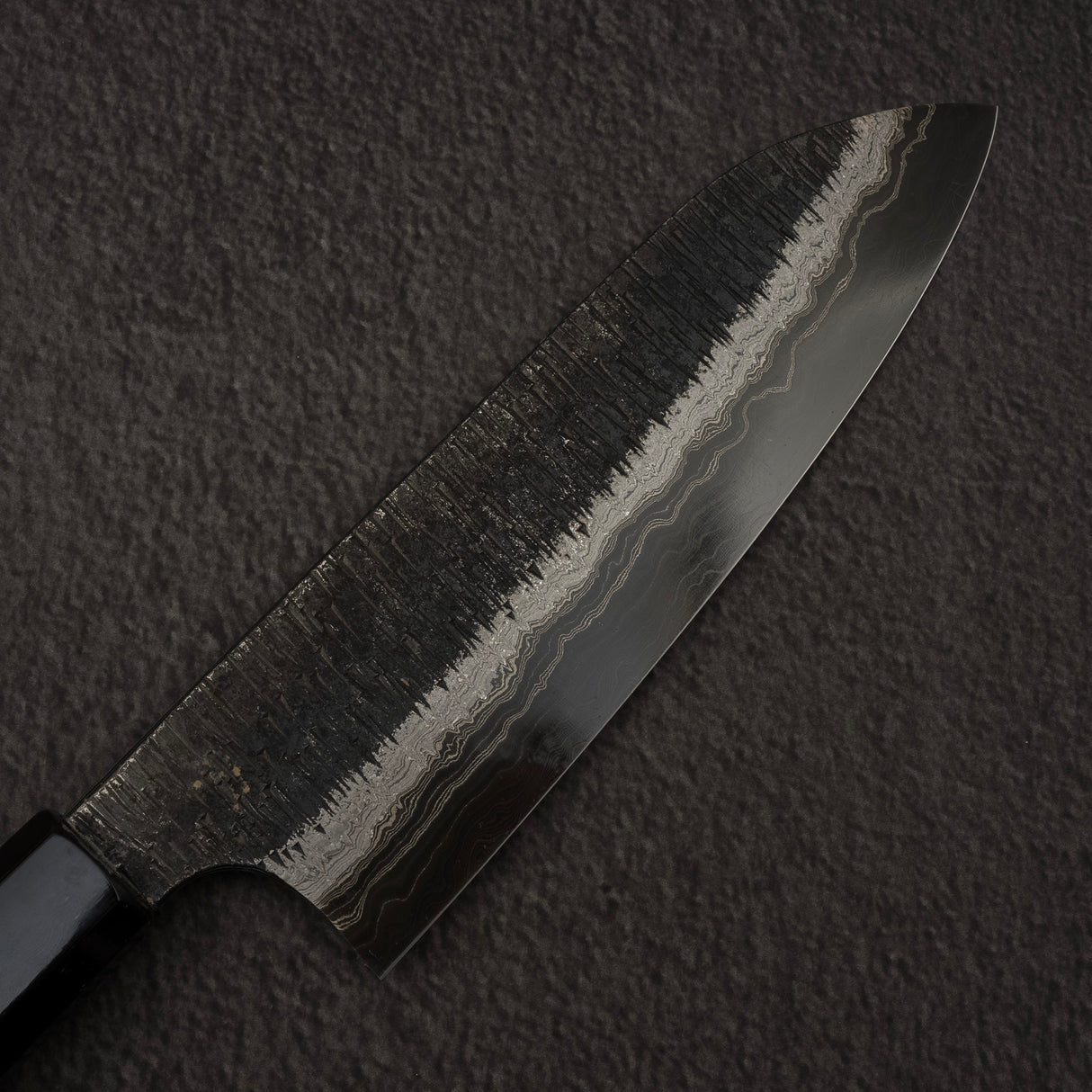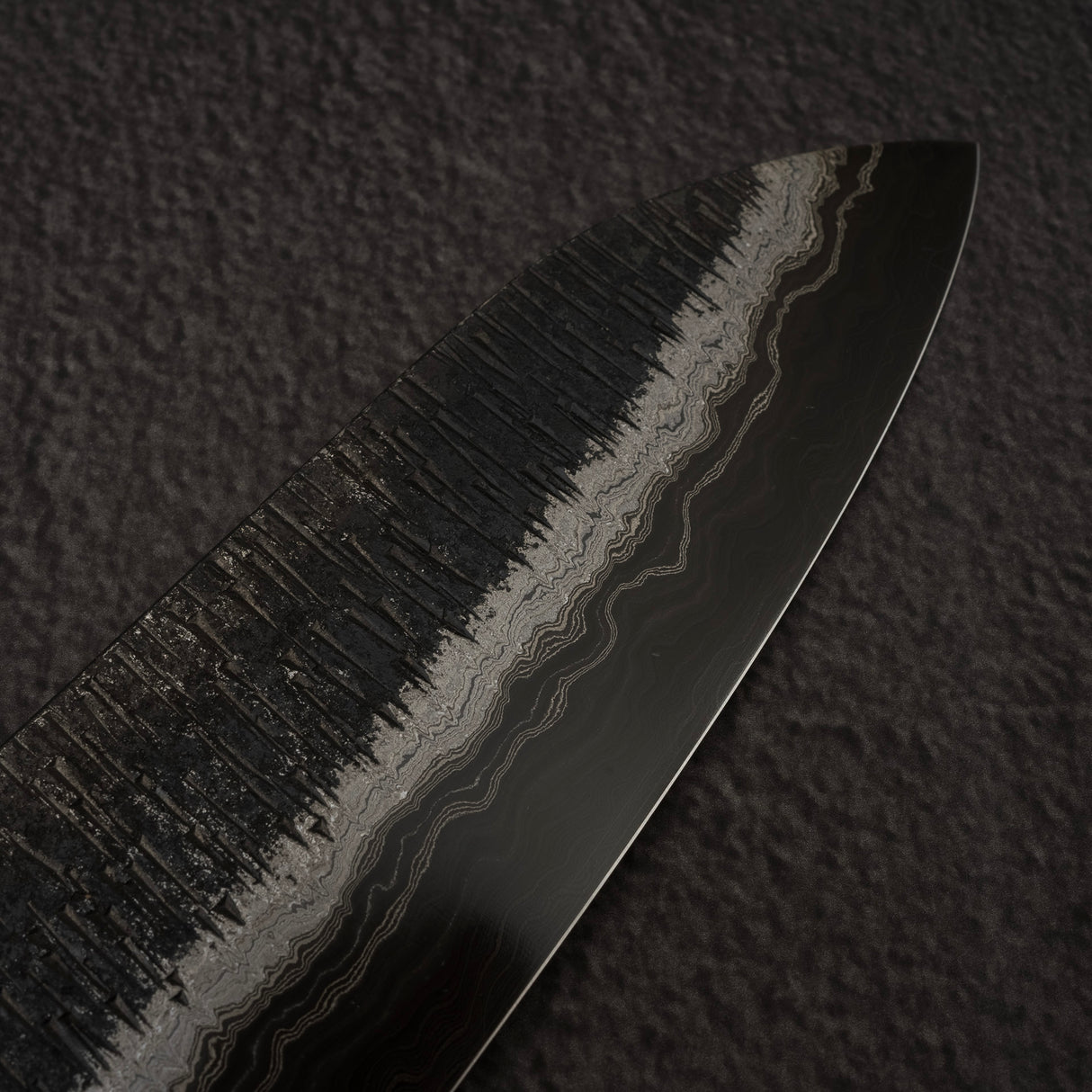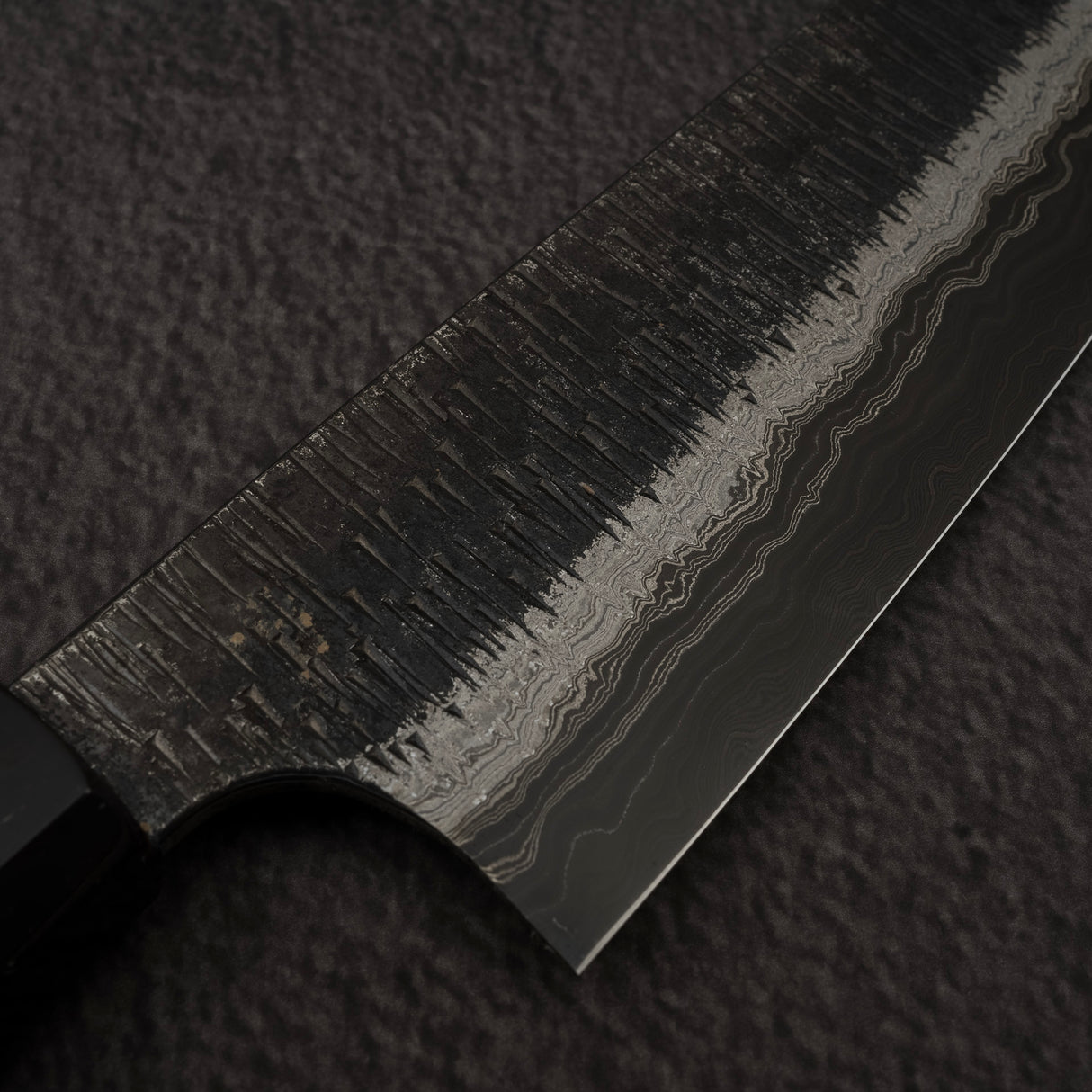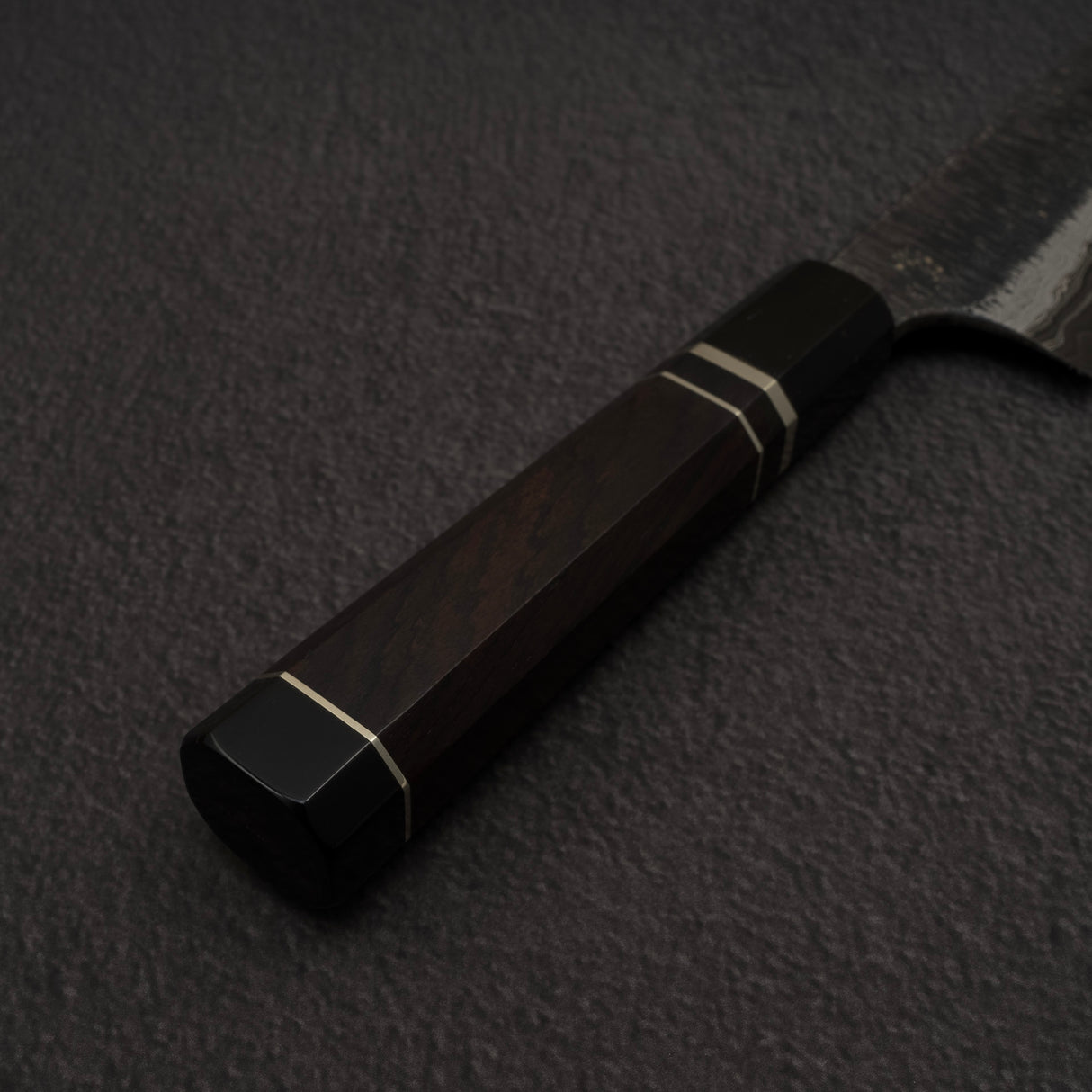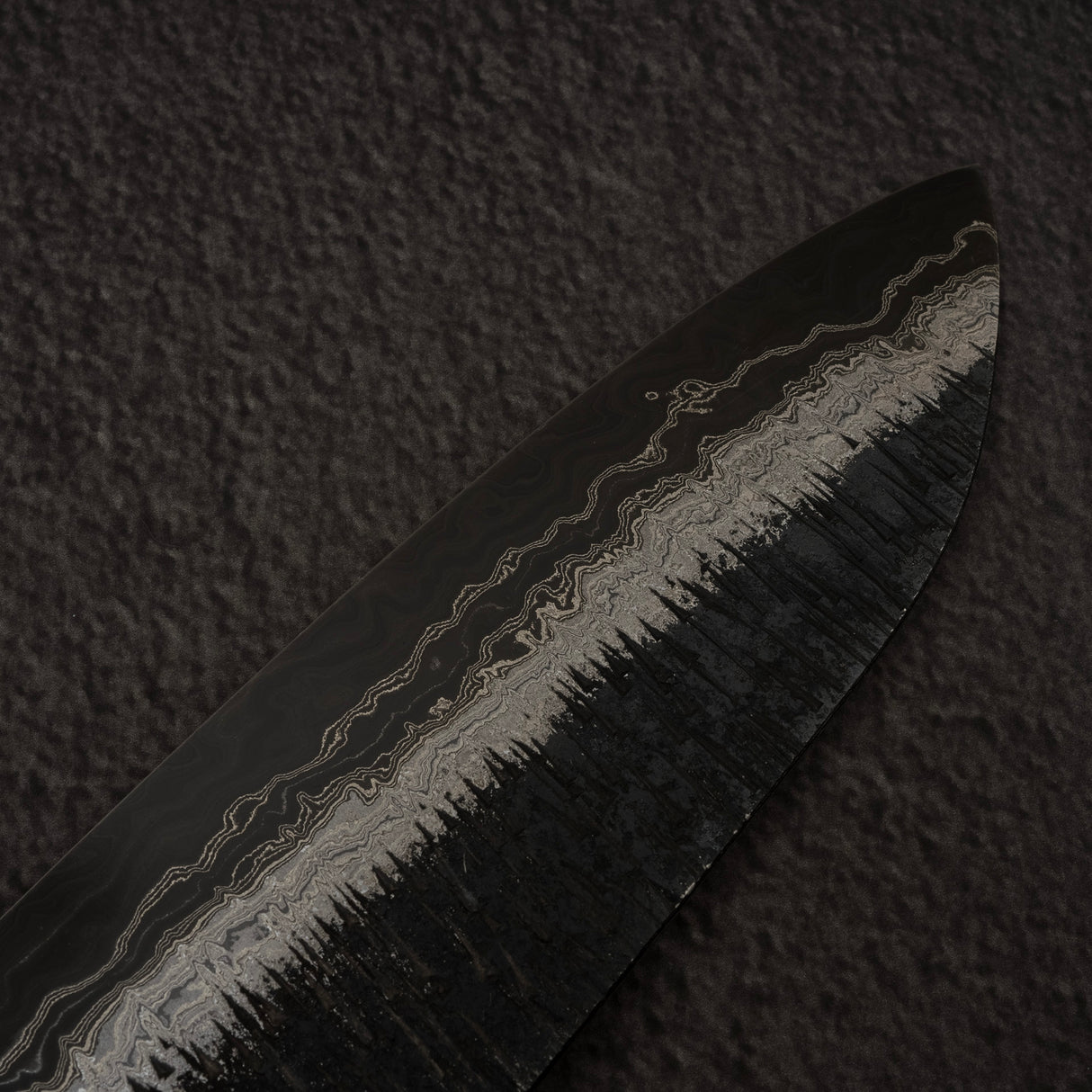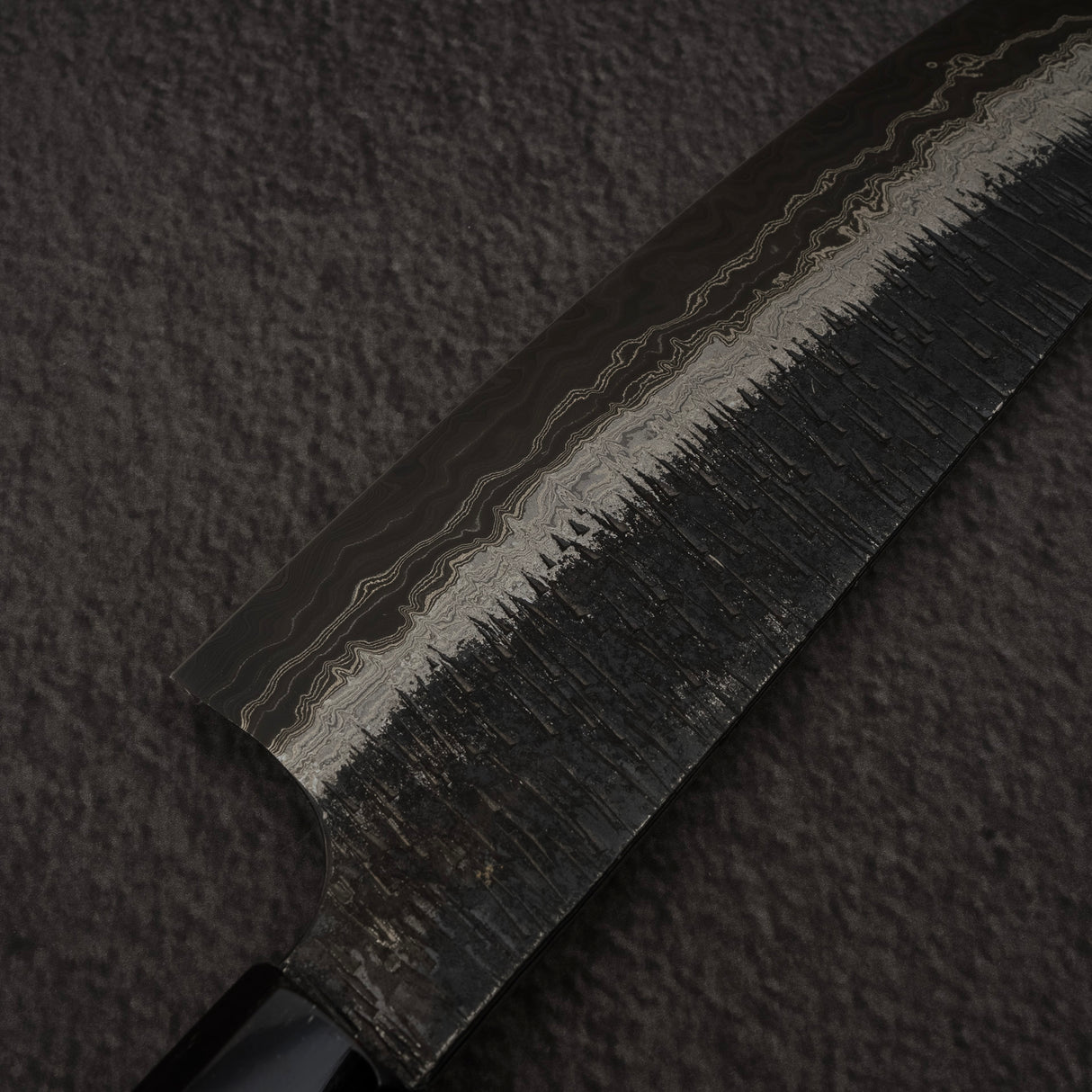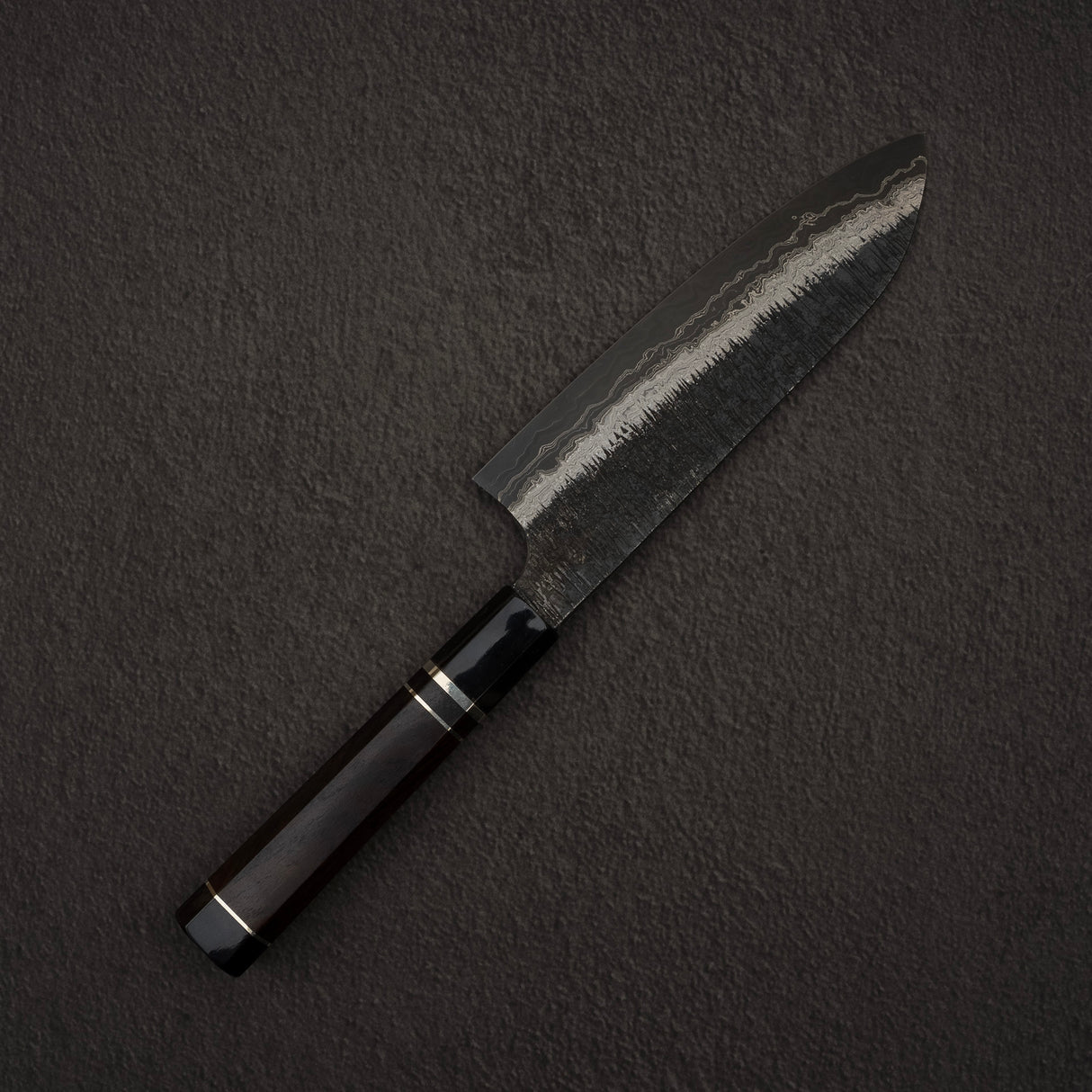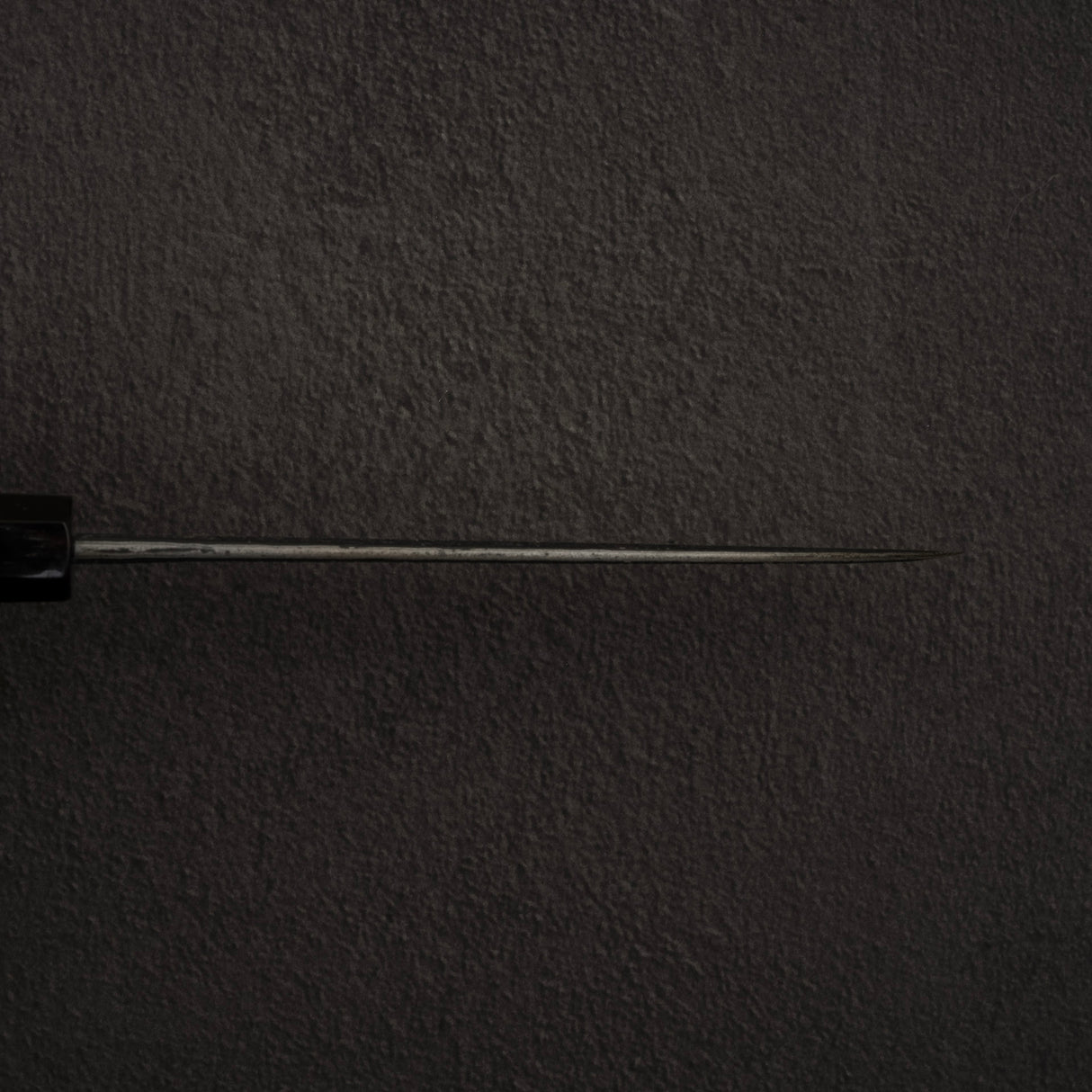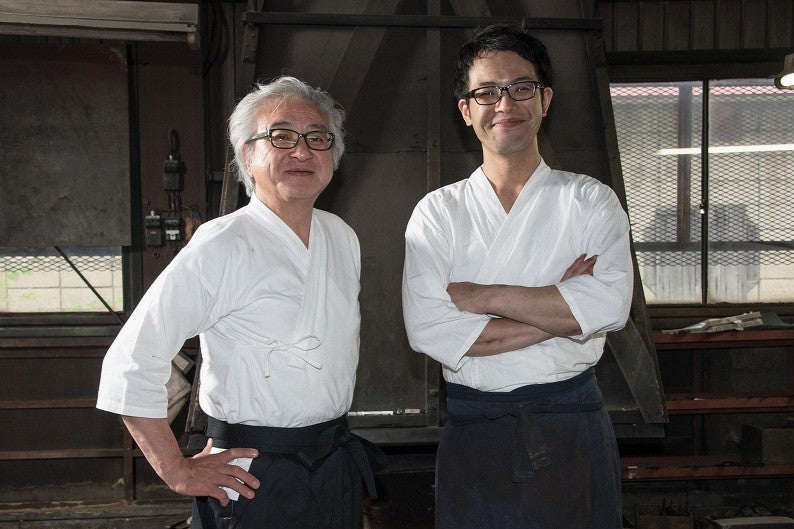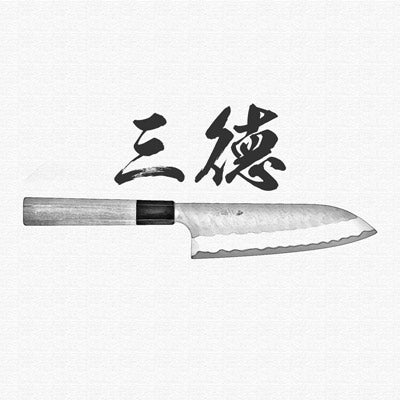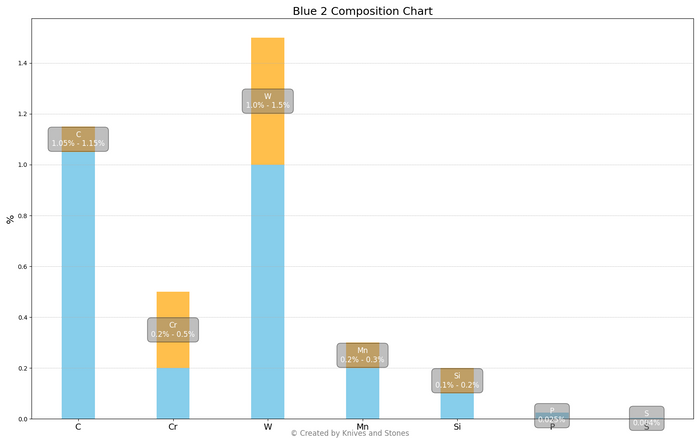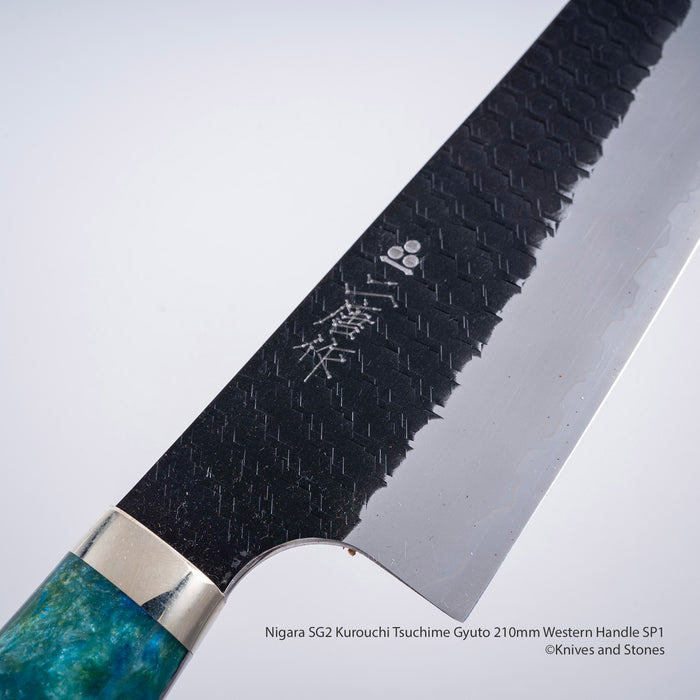The Hatsukokoro x Nigara(巓, Peak) can truly live up to its name. I would consider this as a line as a perfect representation of Nigara's approach to blade making, and the blade by themselves are remarkable in many means.
The elephant in the room is, it is a Coreless/Dual Core construction, with forge-weld Blue 2 and White 2 carbon steel that extend all the way to the edge. In the context of Japanese kitchen knives, this construction is usually reserved for pretty high-end, hand-forged pieces and collector items that are not approachable, that is if they happen to be available when you find them. With some magic, Nigara seems to be able to produce them in relative large quantity, just like what they did with their Yorokobi SLD copper Damascus line.
The reason I say this line is a representative piece for Nigara is, it have done really well at what this brand is best at, and pushed it further. From all the higher-end lines we see recently like the Ryusui or Ginsan Kurozome, Nigara seems to be very into artistic knife with complex visual elements to them, and some interview of Yoshizawa Go, the currently leader of the brand, have clearly indicated his passion In Damascus.
The Itadaki reaches the peak regarding complexity in construction and finish, infusing Damascus, Kurouchi, Tsuchime and Kurozome/etching on one blade, and the profiles in the line with k-tip has that unique grind around the spine to add more texture to the blade. While is its pretty complicate to manufacture with great consistency, the truly impressive part is that Nigara manage to keep these elements organised and clean, resulting a knife you can hold up close and look at for a long time.
When inspected closely, the Damascus appears to be not uniform, the steel becomes more shiny as it gets further away from the edge. It is a indication that Nigara may added some more high nickel steel on top of the blue and white steel, and have them concentrate on the outer side to create contrast, and when looking across the blade starting from the edge, the tone will shift from black to grey then silver, ending with the black Kurouchi finish that is covered with sharp chisel marks that reminds me of You Kurosaki's Fujin line. When holding the blade sideway and edge down, it's like a side of the mountain, starting with dark earth, reaching up to the snow line, and ending at a steep cliff face that covered with sharp, weathered stones. This is truly a high level of craft combining with thoughtful design that I cannot appreciate more.
On top of the great design, the execution is very good. Some of these high-end design from Nigara happens to be on the thicker side and Doen't perform as great. But their improvement on these blades are noticeable on the Newer SLD Yorokobi Special and the later batch of the copper Damascus, and the Itadaki is a pretty good cutter. With a fine edge composed with Blue and White carbon steel, there is not much hesitation for the blade to pierce through the skin of a potato, the weighty blade then fall through quite smoothly. If I'm picky, I shall say there is a bit of food sticking on the bevel, but it is unavoidable with that polished and etched finish.
A coreless hand-forged knife would felt quite distant for many knife enthusiasts, and for many others they may not consider or even heard of it. The production of Itadaki has brought down the price of this kind of prestige blade to a range that is considered affordable for a lot more enthusiasts, which is a remarkable move. With this product line, Nigara have shown us its capability in designing and executing the production of a blade like this I can see there's a proud element in it when they named it "Peak".,


